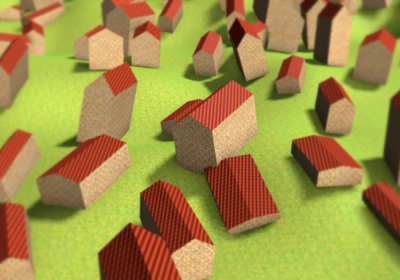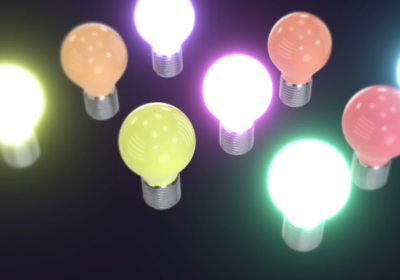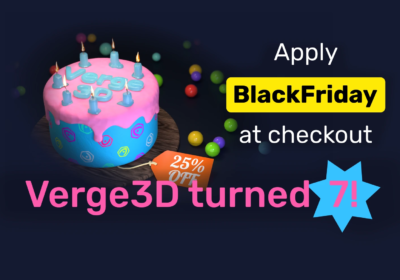We are excited to announce the release of Verge3D 4.8 for Blender! This new version brings spatial (3D) audio effects, improvements in the Performance Profiler and other tools, major shader optimizations for faster rendering and loading, and support for the new features of Blender 4.3 and 4.4.
3D Audio
You can now easily add spatial audio effects to your Verge3D scenes thanks to the newly introduced positional speakers. Simply make a sound positional, and attach it to a 3D object – and you are all set!
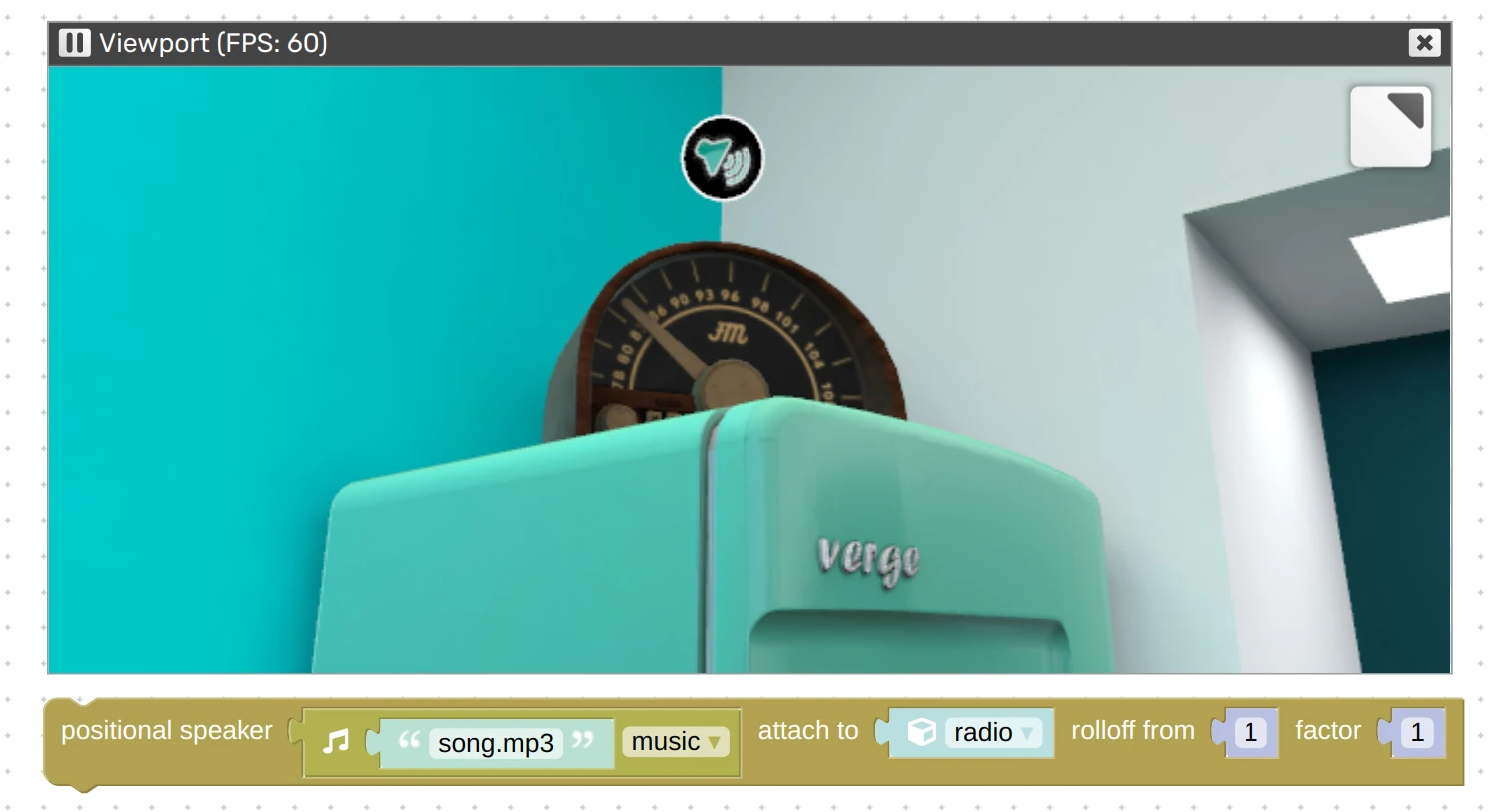
Both sound and music audio assets can be turned to positional speakers. To fine-tune the 3D audio effect, you can use the rolloff – the distance from which the sound intensity starts to decrease, and the factor – the rate of this decreasing.
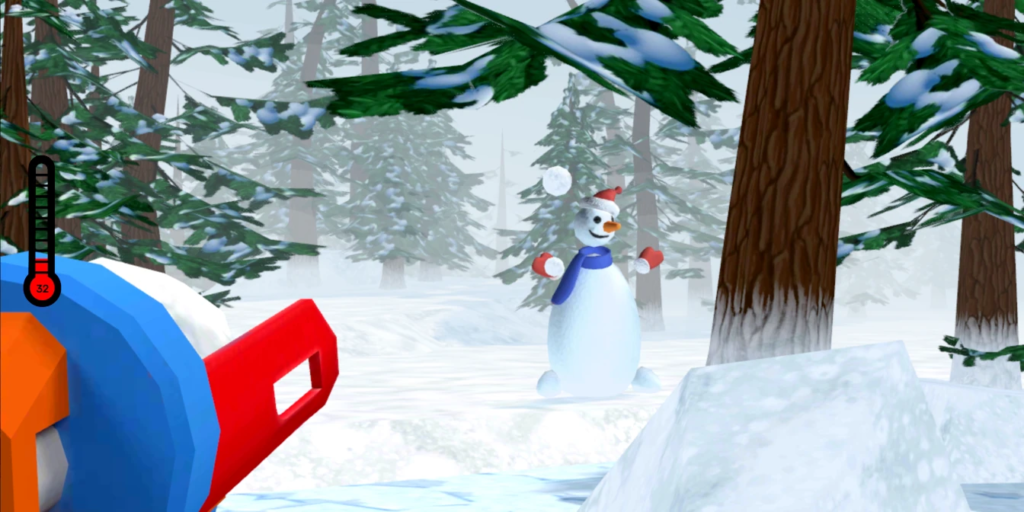
This feature will be especially useful for creating more immersive VR experiences. Put your VR headset on and try out the updated Virtual Reality demo where sounds are attached to the mixer appliance and the radio set. We also used positional speakers in the Snowballs VR game to help the player be more alert to approaching snowmen!
More on Sounds (and Videos)
The Sound iOS Workaround entry in the Puzzles library now works more robustly – in fact, it can help on desktops and Android devices too. This group of puzzles basically makes it possible to play sounds or videos upon application startup, which is normally forbidden due to security restrictions of the browsers.
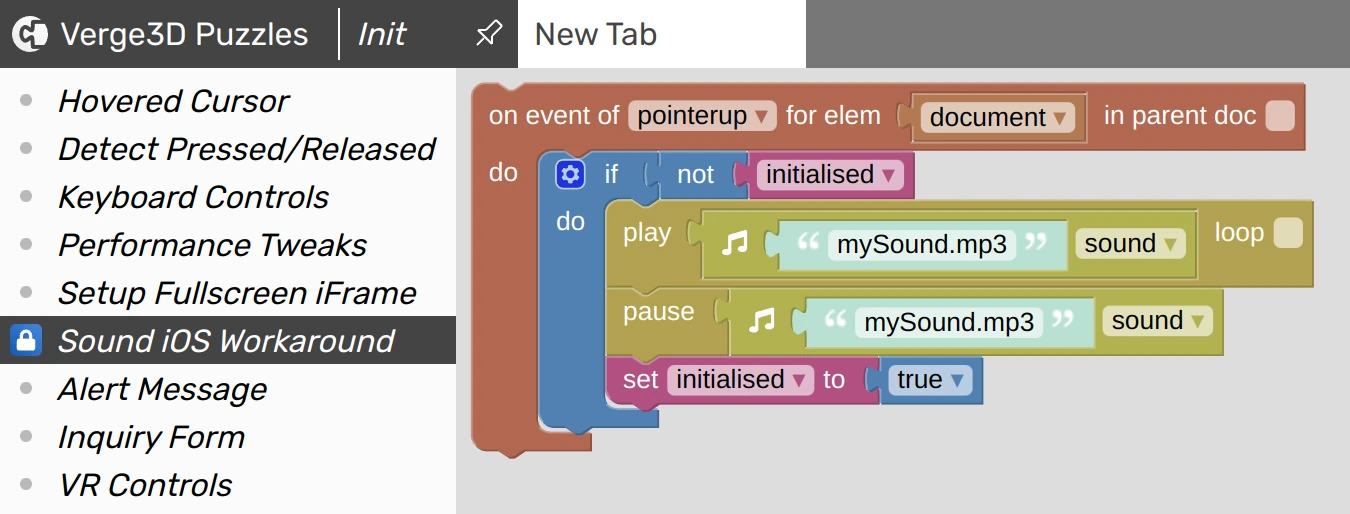
With that being said, the right way to initiate sounds or videos in your app is to make the user click on the 3D canvas (or some sort of a menu or startup screen). Once the user clicks on it, the playback is unblocked, with no workarounds needed.

Blender-Specific Updates
This update introduces support for Blender 4.3, the stable release of which can be expected in a few days. We also offer a preliminary support for the upcoming Blender 4.4 (currently at alpha stage).
Blender 4.3 is the first version that officially supports the emerging arm64 architecture (on Windows). We implemented required tweaks in the Verge3D add-on so that it works on such systems.
We made the Diffuse and Specular components of the Principled BSDF node more accurate and consistent with Blender. Also, the node’s parameters IOR, Specular > IOR Level, and Specular > Tint now correctly work in Verge3D.
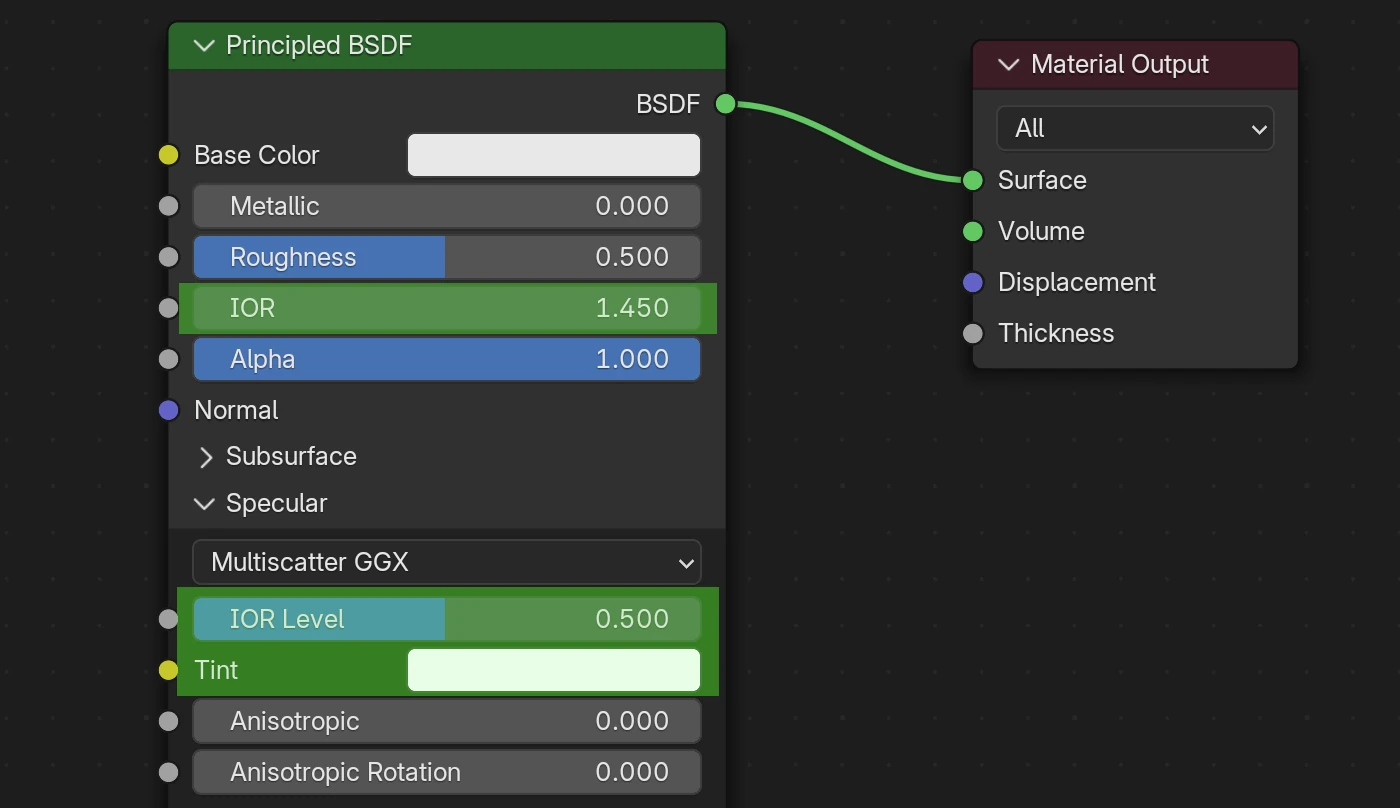
We also optimized the shader code underneath the Principled BSDF node, resulting in such shaders being rendered faster. Moreover, these shaders are now compiled faster too, helping to the app’s loading speed.
Scenes exported with older Blender versions (before 4.0) can now be properly used with the puzzles export to glTF and export to USDZ. We also got rid of the warning about deprecated Principled BSDF node when using such old scenes.
We made the Mix Color node’s Darken and Lighten modes work properly, while adding support for the Exclusion mode. Thanks for bringing this up on the forums.
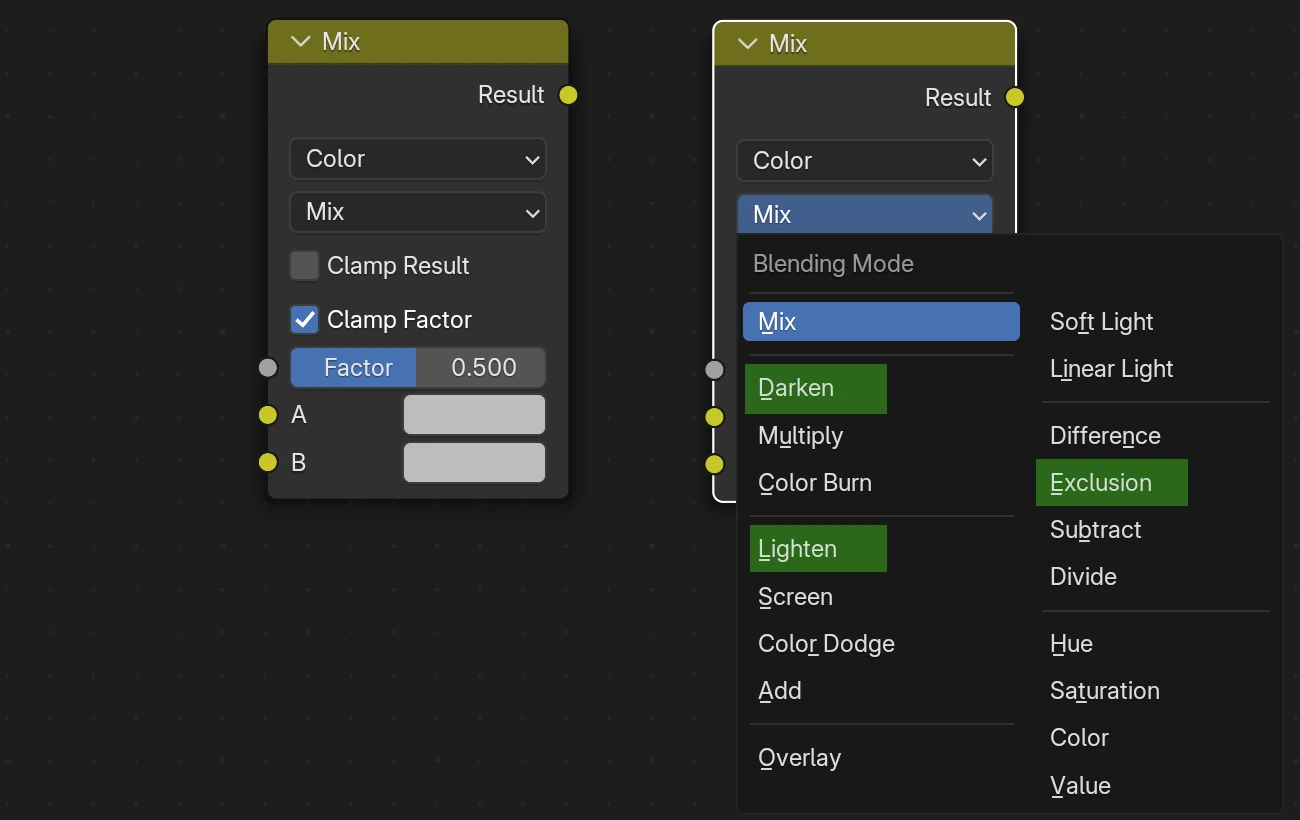
New nodes Metallic BSDF and Gabor Texture that appeared in Blender 4.3 are now supported.
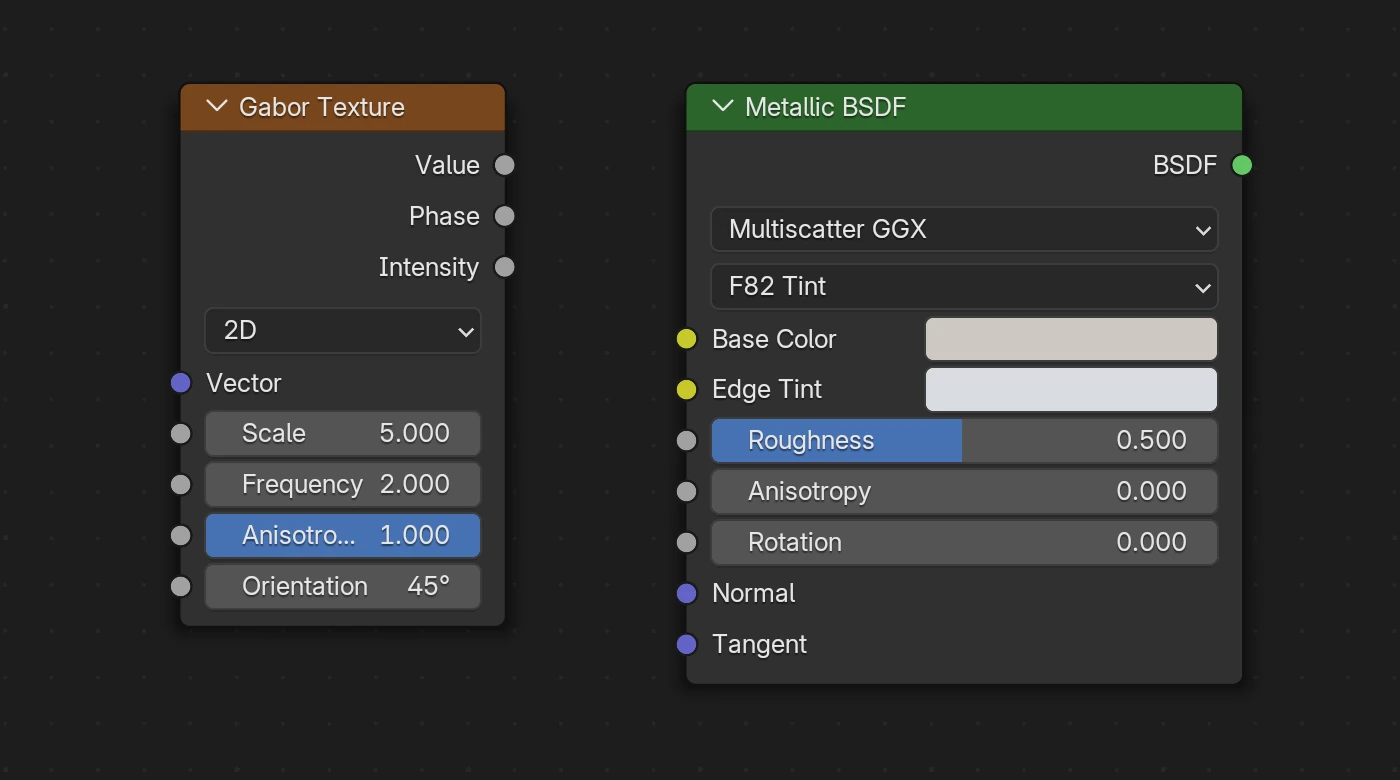
New nodes can be used to produce metal-specific effects and interesting procedural textures like this:
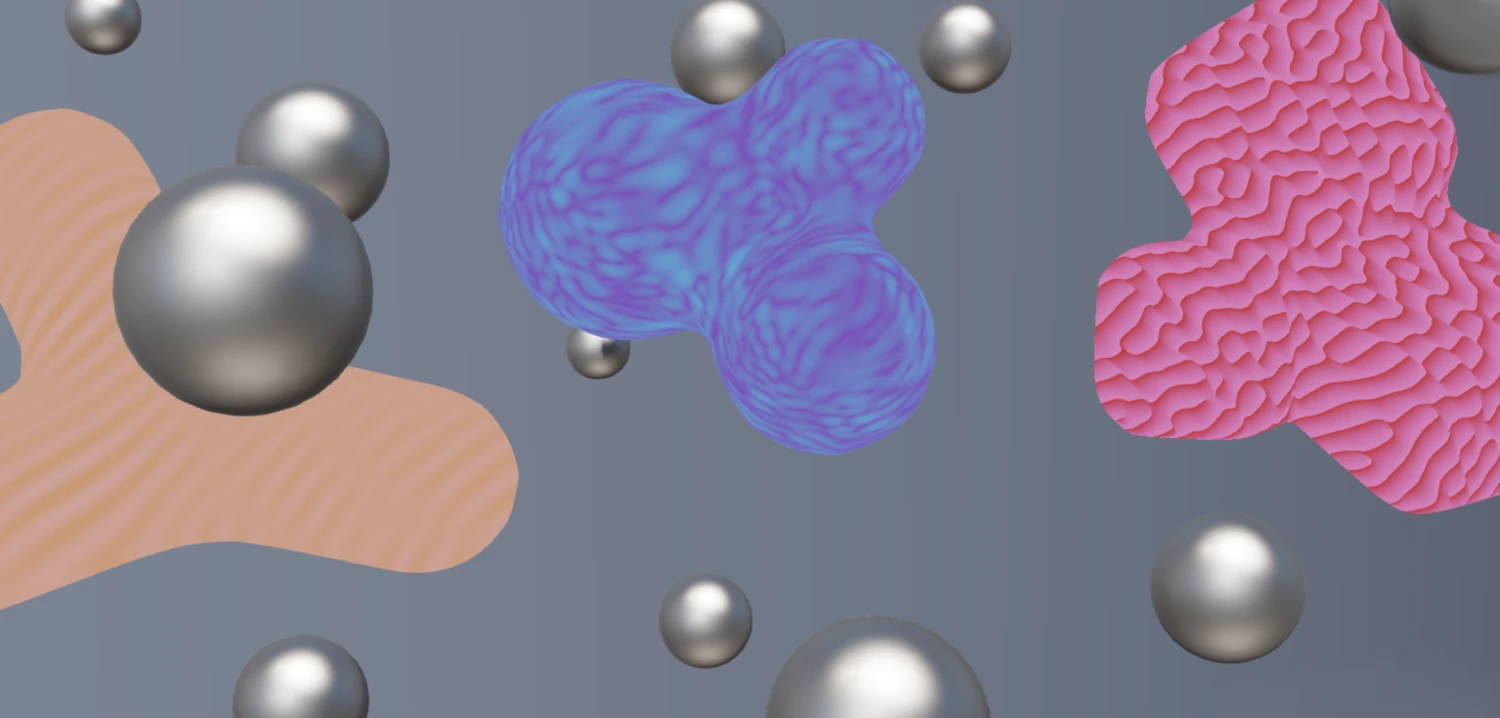
We improved support for “linear” Color Space parameters (such as Linear Rec.709 and similar) that are set to texture nodes, for better consistency with Blender viewport.
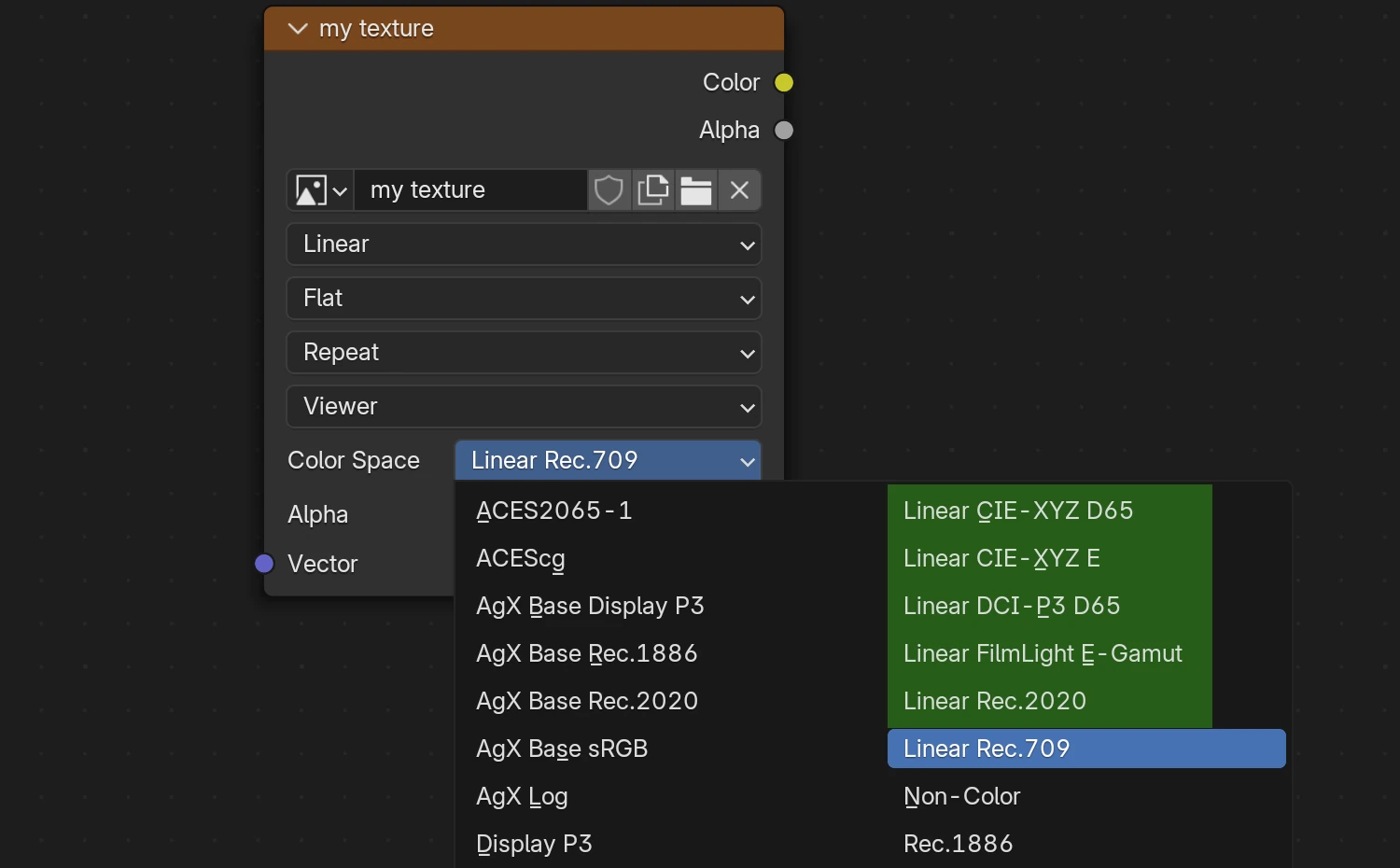
If you are using Blender 4.2 or later, you must now use the “native” Shadows checker to enable shadows.
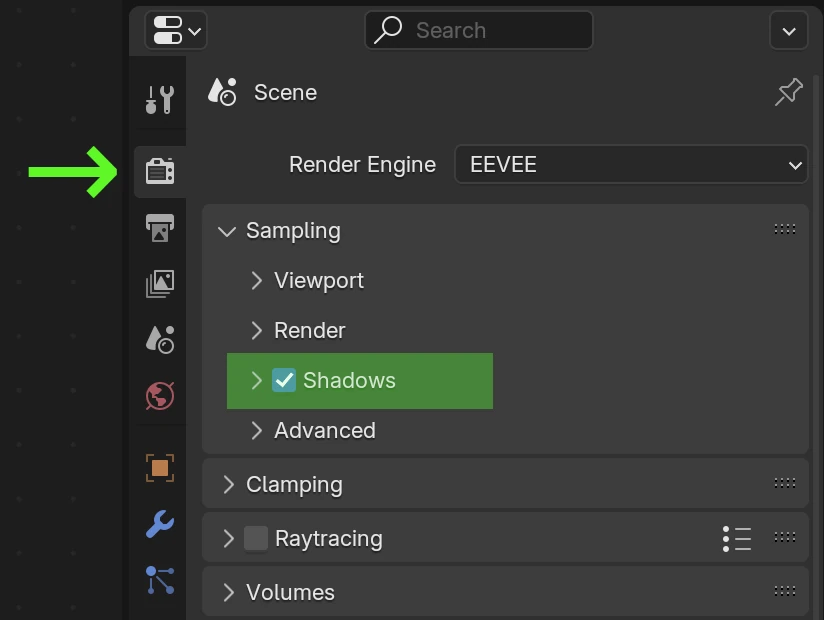
Finally, we fixed the inconsistency with Blender caused by selecting a wrong UV for normal mapping.
Performance Profiler
Verge3D’s scene analyzing tool (F12, then switch to Console, then in the app hit P-P-P) obtained multiple improvements this time.
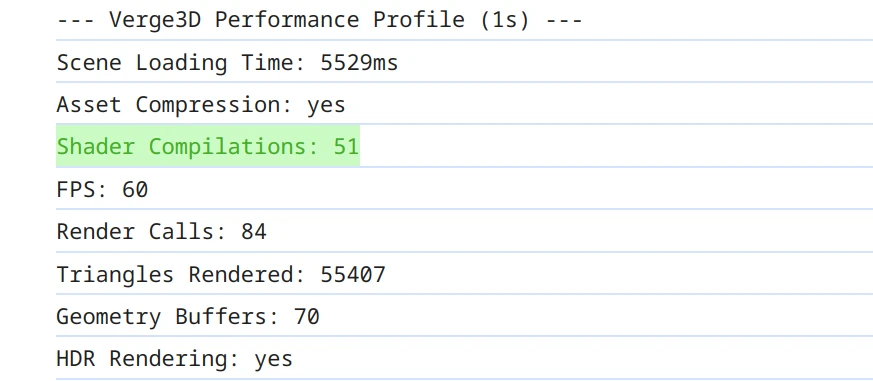
- the total number of compiled shaders is printed, which is a very important factor affecting how quickly the app is loaded (the less the better)
- timing for materials and shaders is now provided with microsecond precision
- non-rendered materials are denoted with N/R (meaning they are hidden or invisible due to frustum culling)
- Render Calls and Triangles Rendered are always displayed as integers
- resolutions of cubemap textures are shown in a more clear format e.g. 256x256x6
- proper names are printed for system materials and lookup textures
- the depth texture is now properly shown in the profile
- various formatting adjustments
Puzzles
Here is a truly long-awaited feature: when swapping materials via puzzles, a replaced material is no longer removed from the scene, and can be re-assigned later. As a result, there is no need to bother about preserving the materials by assigning them to swatch objects when building a configurator.
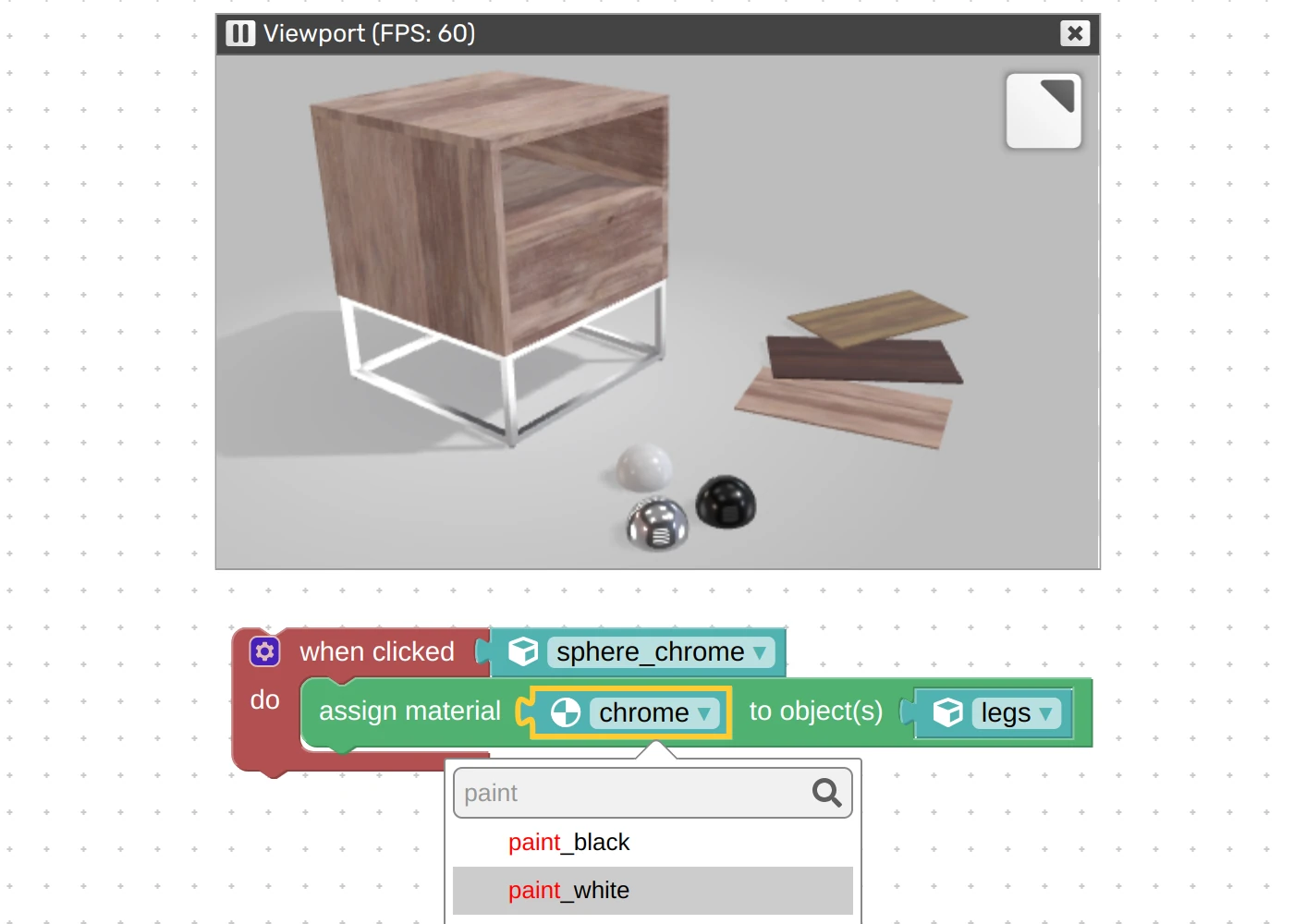
We have implemented the possibility to zoom an embedded Verge3D scene with Ctrl + Scroll as in Google Maps. You can use the puzzle set camera param to enable this behavior. Thanks for suggesting this on the forums.

Puzzle bind element now works in AR mode. Thanks for bringing this up on the forums.
Puzzle check performance updated for the latest hardware database, which particularly includes iPhones 18 and latest iPads.
Shader Optimization
We revised the shader generation process inside the engine.
First of all, we got rid of unused/duplicate/deprecated/legacy code paths to unburden the shader compiler. But most importantly, we reduced the number of unique shaders by streamlining their code structure so that similar shaders are properly detected as such. This significantly reduces the compilation work required for loading a more or less advanced application. Loading speed gains are 10-20% on average and can be even higher if lots of materials are used in the scene.
This also benefits to making the browser’s internal shader cache more efficient across different applications and even websites. For example, when somebody visits yet another Verge3D-based website, it may load much faster thanks to pre-compiled shaders that are already stored in the browser cache.
Finally, we ensured that WebGL 1.0 compatibility code is only inserted in shaders only when needed (e.g. when running on older hardware).
Blender Material Packs
We have recently released new versions of Blender Essential (v11) and Machinery (v2) packs. The improvements include: 8 new scratched metals, fixed transparency issues, and various other minor fixes.
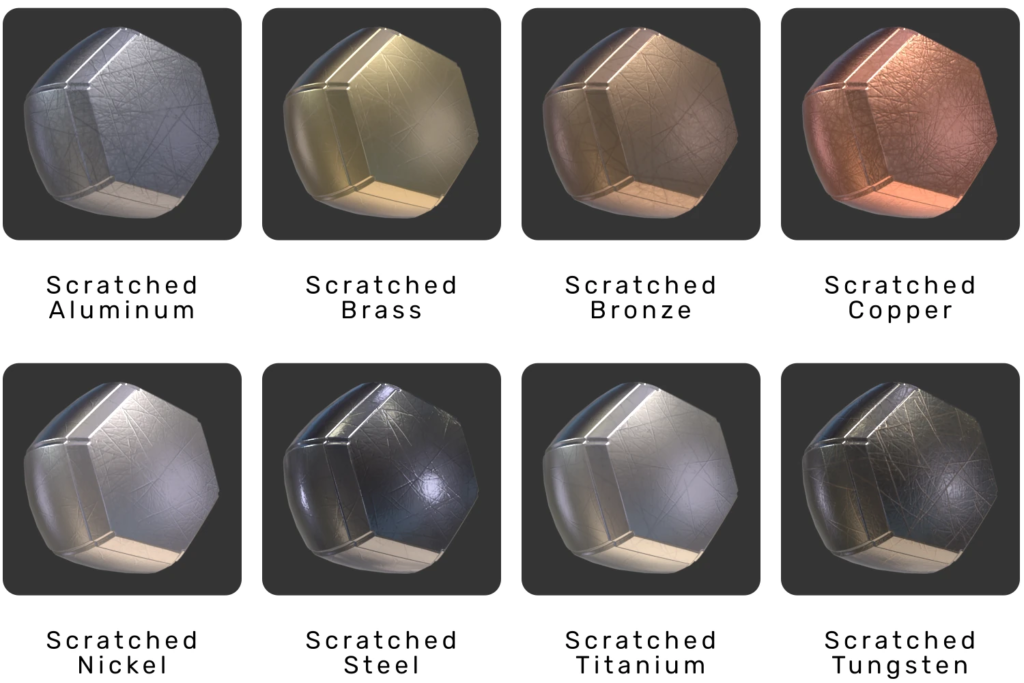
If you already own some of the above-mentioned asset packs, you can just download the updated version from your dashboard for free.
Other Features
In the previous 4.7 release we removed some PCF filtering methods from the export plugins and Puzzles. Now we are dropping them from the engine entirely, with the shadow docs updated accordingly.
We also cleaned up the engine from other deprecated features, glTF extensions and JS APIs.
We improved click detection for points, lines, and grids.
The default .js file of the application was simplified a bit by using a class-based custom preloader.
Skinning and morphing are now supported for objects reflected by a reflection plane. This issue was reported through the Enterprise support channel.
Normal mapping now properly works with skeletal animation. Thanks for bringing this up on the forums.
Fixed Bugs
The vector math puzzle can now be plugged into both vector and numeric inputs (because its dot operator produces a number). Thanks for bringing this up on the forums.
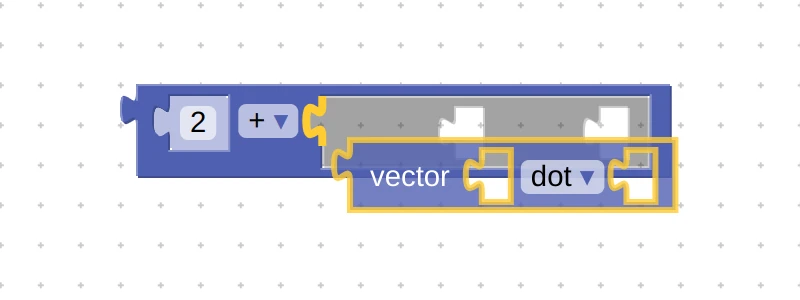
We fixed the crash when using the Sprite class via JavaScript API.
We added a missing search field to the puzzle for looping through dictionaries.
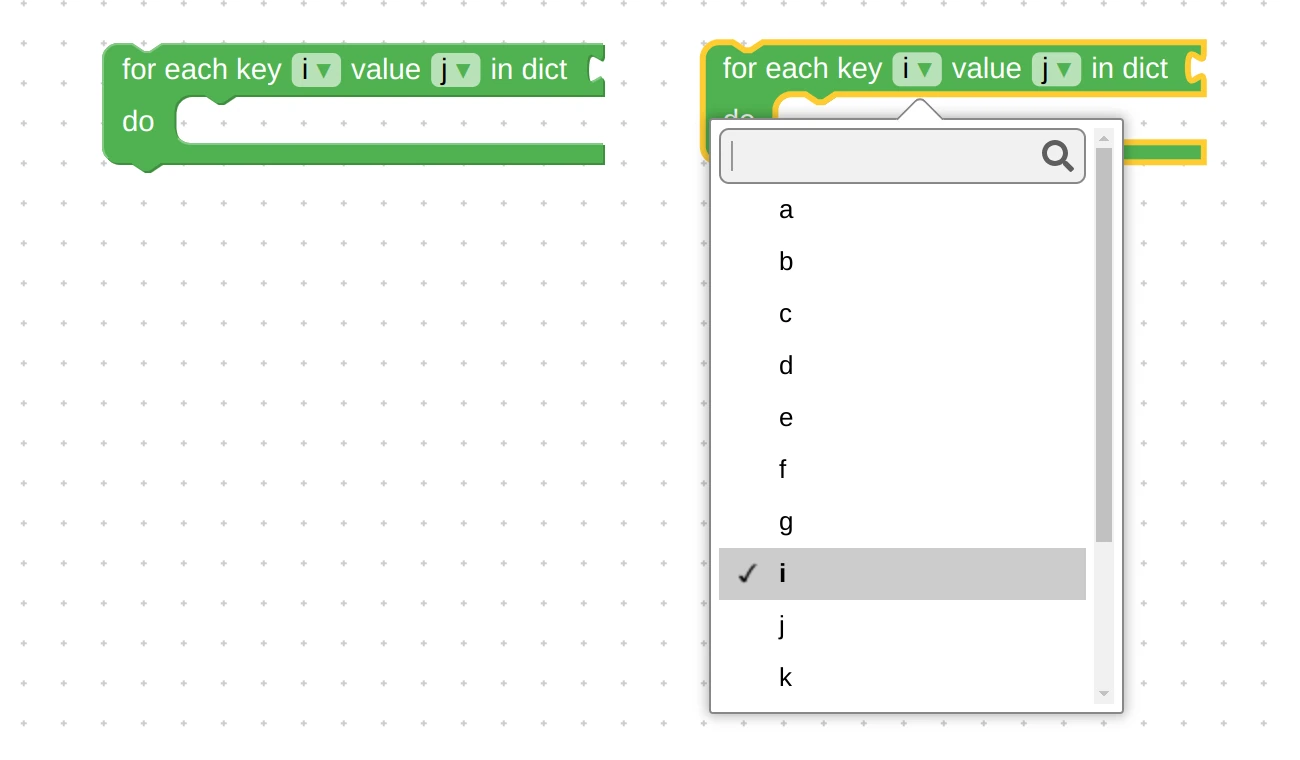
The engine can now handle Points and Lines from glTF files created by some third-party exporter. Thanks for reporting this on the forums.
Auxiliary objects such as points, grids, lines, sprites, etc no longer corrupt rendering when outlining is enabled. Thanks for bringing this up on the forums.
Documentation
We reworked the API documentation so that its 50+ code examples can now be easily copied and pasted into the exec script puzzle, and will work without any modifications.

We improved the User Manual by replacing outdated pictures with screenshots captured from the latest Blender versions.
We extended and improved the material library docs to cover more correct ways to install and use the asset packs, as well as other topics.
Update Now!
Get the new version of Verge3D from the downloads page! Let us know how it works for you, or suggest new features for implementation on the forums. We’d be happy to hear your feedback!

